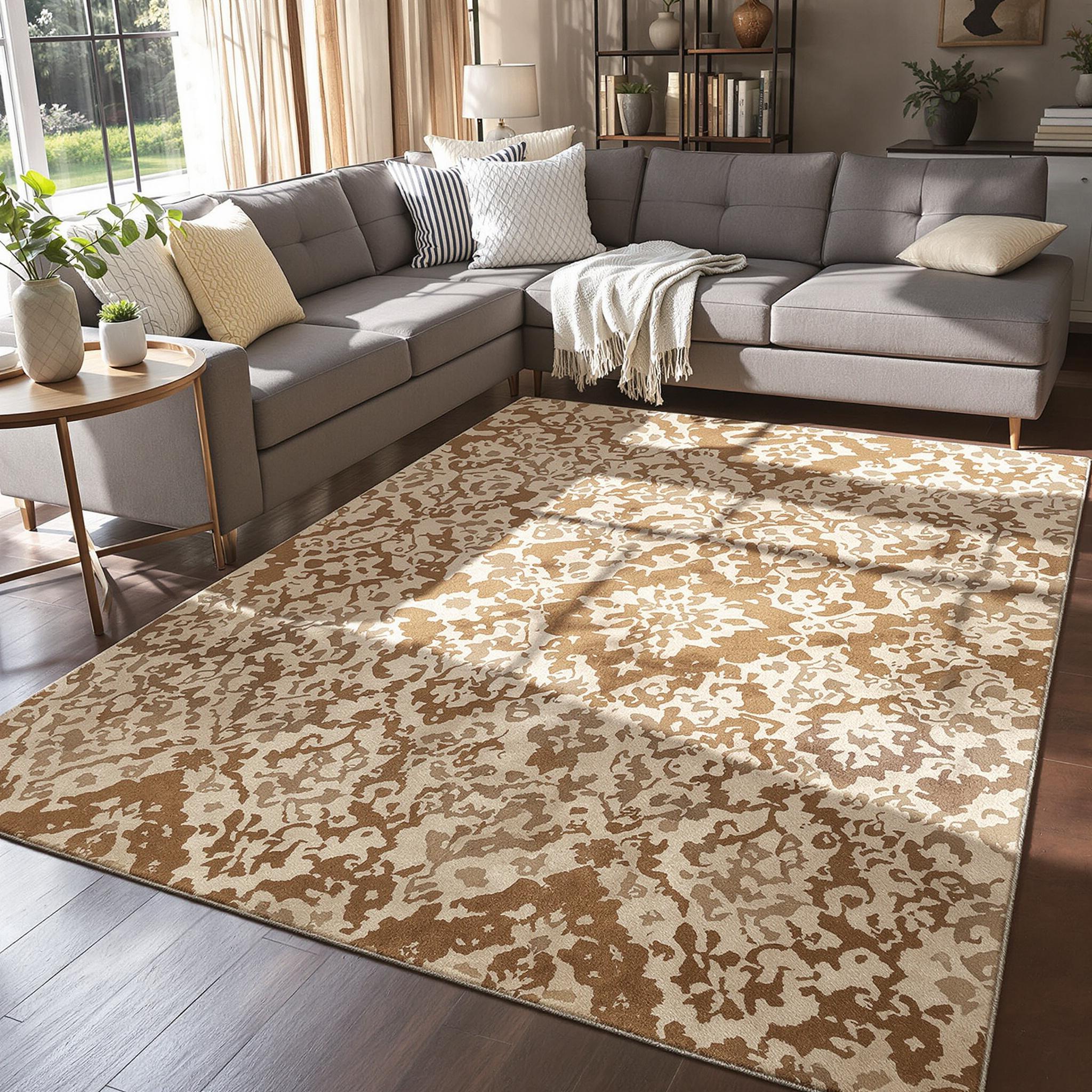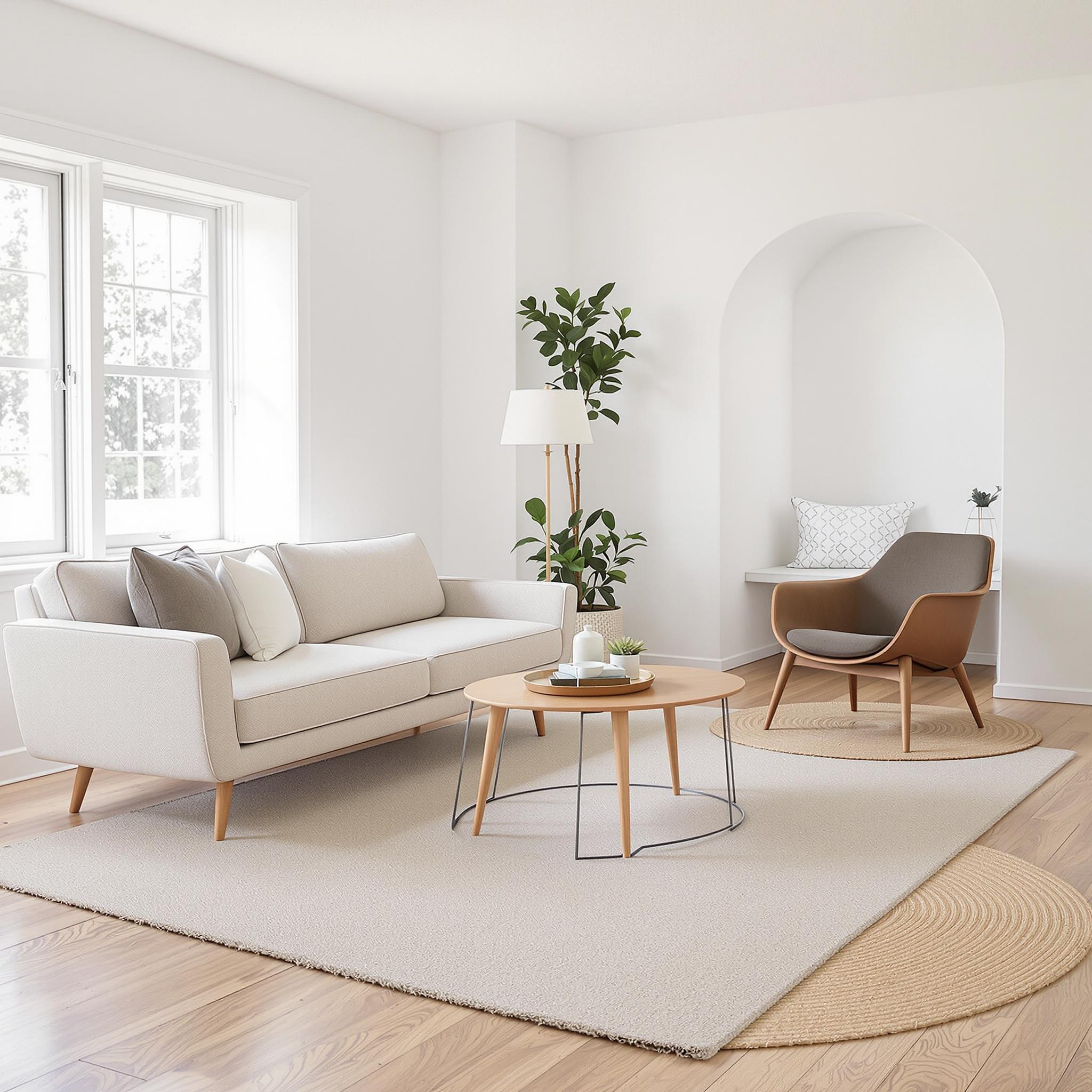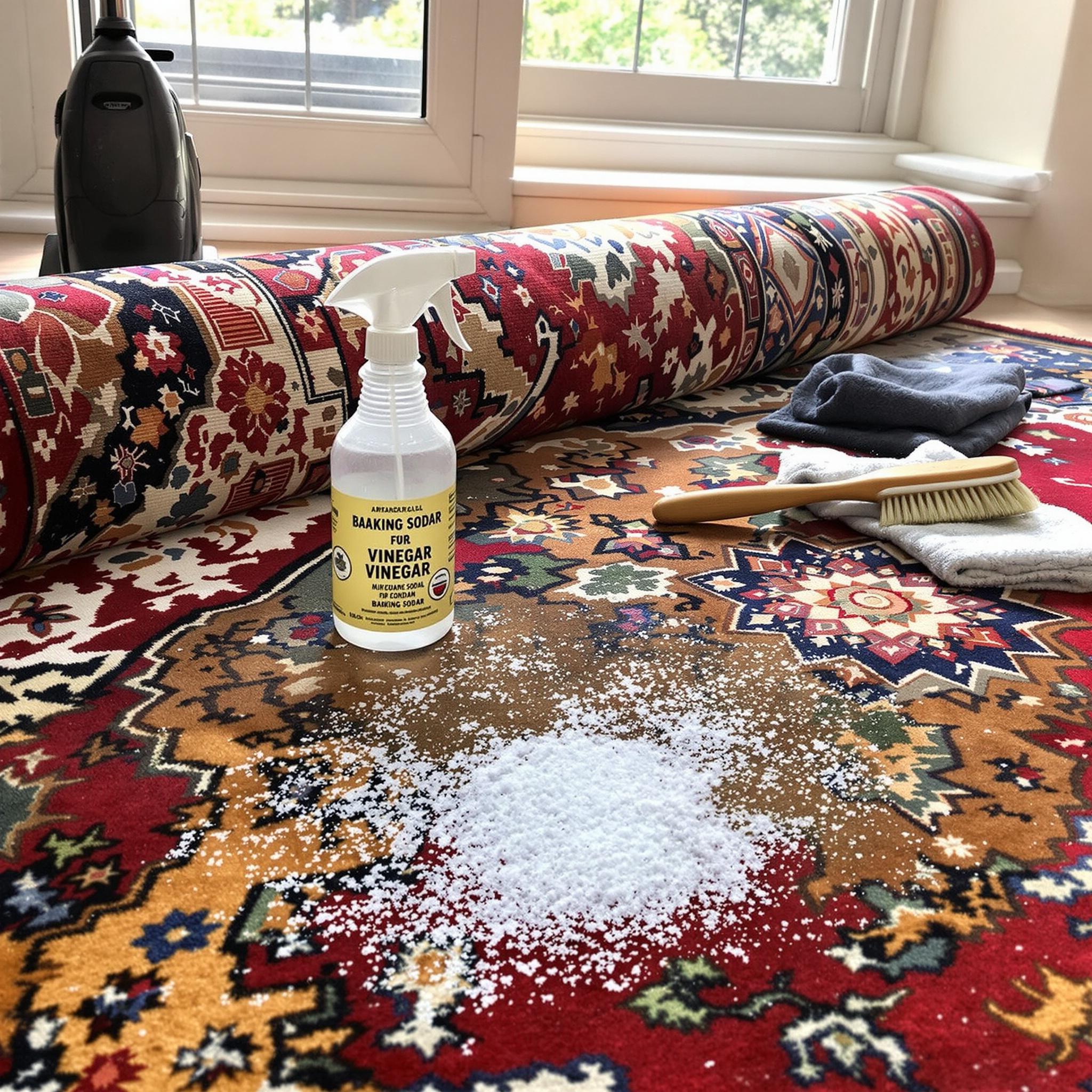Why Rug Choice Matters in Your Living Room
A rug ties a room together. It sets the tone and adds warmth. Think of it as the foundation of your space. A good rug pulls colors and textures into harmony. Without one, a room can feel incomplete.
I learned this the hard way. Years ago, I bought a sleek couch and chairs. The setup looked cold and unwelcoming. Adding a soft, patterned rug transformed the vibe instantly. It felt cozy and inviting.
Your rug choice impacts more than looks. It affects how a room feels underfoot. Hard floors can be uncomfortable. A plush rug softens the experience. This matters in high-traffic areas like the living room.
Understanding Rug Styles for Every Home
Rug styles vary widely. Each style suits different tastes and spaces. Here’s a quick breakdown:
- Traditional rugs: Feature intricate patterns and rich colors.
- Modern rugs: Focus on clean lines and bold shapes.
- Bohemian rugs: Burst with color and eclectic designs.
- Minimalist rugs: Use neutral tones and simple textures.
Match the rug style to your decor. A modern rug clashes with vintage furniture. A bohemian rug feels out of place in a sleek, contemporary space. Stick to what complements your look.
Think about the mood you want. Soft neutrals create calm. Vibrant patterns add energy. My friend once swapped her dull beige rug for a colorful Moroccan-style piece. Her living room came alive.
Getting the Size Right: Avoid Common Mistakes
Rug size is key. Too small, and it gets lost. Too large, and it overwhelms. Measure your space before buying. Leave at least 12 inches of floor visible around the edges.
Here’s a rule of thumb:
- For small rooms, choose a 5×8 or 6×9 rug.
- Medium rooms need an 8×10 or 9×12 rug.
- Large spaces work best with 10×14 or bigger.
Consider furniture placement. In seating areas, all furniture should sit on the rug. At minimum, the front legs should rest on it. Floating furniture off the rug looks awkward.
I made this mistake once. I bought a tiny rug for my sectional sofa. It looked silly and unbalanced. Replacing it with the right size fixed the issue.
Material Matters: Pick What Works Best
Rug materials affect durability and comfort. Wool rugs are soft and long-lasting. They resist stains but cost more. Cotton rugs are budget-friendly. They’re easier to clean but wear out faster.
Synthetic options like nylon or polyester mimic natural fibers. They’re affordable and durable. However, they lack the luxury feel of wool or silk.
Consider your lifestyle. Families with kids or pets need tough materials. Wool or nylon works well here. For low-traffic areas, delicate silk or viscose adds elegance.
Placement also matters. Plush rugs feel great in cozy spots. Flatweave rugs suit high-traffic zones. I use a flatweave in my hallway. It handles daily wear without showing dirt.
Weaving in Practicality: Maintenance and Care
Maintenance keeps rugs looking fresh. Vacuum regularly to prevent dirt buildup. Rotate the rug every six months. This ensures even wear.
Spills happen. Blot them immediately with a clean cloth. Avoid harsh chemicals. Use mild soap and water for cleaning. Some rugs need professional care. Check the label for instructions.
Pet owners face extra challenges. Opt for stain-resistant materials. Darker colors hide accidents better. My dog once ruined a light-colored rug. Lesson learned—I switched to darker tones.
Padding extends rug life. It prevents slipping and adds cushioning. Choose a pad that matches your rug size. Trim excess edges for a snug fit.
Color and Pattern: Make a Statement
Color sets the mood. Neutral rugs blend seamlessly. Bold hues make a statement. Patterns add interest but can overwhelm small spaces.
Match rug colors to your palette. Pull shades from walls, furniture, or decor. A rug with similar tones creates cohesion. Contrasting colors add drama.
Stripes elongate narrow rooms. Geometric prints suit modern spaces. Florals bring a touch of vintage charm. Choose what fits your style.
My living room has warm earth tones. I picked a rug with subtle rust and gold accents. It ties everything together without overpowering.
Final Thoughts Before You Shop
Choosing a rug takes thought. Consider style, size, material, and maintenance. Balance aesthetics with practicality. Trust your instincts but plan ahead.
Visit stores to see rugs in person. Online images don’t show texture or true color. Feel the material. Test its durability. Ask questions if unsure.
Remember, a rug is an investment. Spend wisely. A quality piece lasts years. Rushing the decision leads to regret. Take your time to find the perfect fit.
How to Choose the Perfect Rug for Your Space
Choosing a rug might seem simple, but it’s trickier than you think. I once ordered one online without measuring my space. It showed up looking like a welcome mat for giants. Oops. Lesson learned: measure your room before buying.
Size is key. A small rug looks weird, like it’s floating in the middle of the floor. Too big? It can overpower the room. Ideally, all furniture in a seating area should fit on the rug. For dining spaces, ensure the rug extends at least 24 inches past the table edges so chairs don’t snag when moved.
Don’t forget shape! Rectangular rugs work for most rooms, but round ones are great for small areas or under circular tables. I saw a friend use a round rug in her reading nook—it felt cozy, almost magical.
Budget-Friendly Rugs That Don’t Skimp on Style
Not everyone has tons of cash to spend on rugs—I get it. The good news? Affordable doesn’t mean ugly. Stores like IKEA, Target, and Amazon have stylish options that won’t break the bank. My go-to? Jute rugs. They’re durable, neutral, and budget-friendly.
- IKEA LENDA Series: Flatweave rugs, easy to clean, and come in earthy tones.
- Target Threshold Collection: Machine-washable rugs—perfect for homes with kids or pets.
- Amazon Basics: Lots of decent options if you read reviews carefully.
Here’s a tip: layer rugs. Place a small patterned rug over a larger neutral one. Instant texture and depth. I did this in my living room, and people always notice. They think it’s fancy, but really, it was just cheap.
Luxury Rugs Worth the Splurge
Now, let’s talk splurges. Sometimes, spending more is worth it. Persian rugs, for example, are timeless and add instant class. Plus, they can become family heirlooms.
I visited a friend who inherited a Persian rug from her grandma. She thought it was “just an old rug” until someone told her its value. Moral of the story? A luxury rug might be an investment for future generations.
If you’re ready to splurge, check these brands:
- Stark Carpet: Custom designs that feel like couture for your floors.
- Rug & Kilim: Modern twists on classic patterns with bold colors.
- The Rug Company: Collaborations with top designers for style and quality.
Worried about upkeep? Most luxury rugs come with care instructions. Get them professionally cleaned if needed. Treat them well, and they’ll last decades.
Adding Personality with Patterned Rugs
If you love color and design, solid rugs might feel boring. I get it—I love patterned rugs too. They bring energy to a room and tie everything together. But be careful. Patterns can overwhelm if you’re not thoughtful.
I once bought a geometric rug for my bedroom. At first, I loved it. But paired with bold wallpaper, it felt too busy. If you go bold, keep the rest of the room simple. Solid walls and minimal accessories help balance things out.
My favorite patterns include Moroccan-inspired designs for global flair and vintage florals for romance. Not ready to commit? Start small. Try a patterned runner in a hallway or kitchen.
Practical Tips for Rug Maintenance
Even the prettiest rug will look bad if it’s dirty. Regular cleaning is crucial. Here’s what I’ve learned after years of trial and error.
Vacuuming is non-negotiable. Do it weekly, more often in high-traffic areas. Rotate your rug every few months to prevent uneven wear. Spills happen—act fast. Blot, don’t rub, and check the care label before using cleaners.
One time, my cat spilled red wine on my cream rug. Panic city. But guess what worked? Club soda. Blotting with it saved the day. Now I keep a bottle handy.
For deep cleaning, pros are worth it, especially for wool or silk rugs. Yes, it costs money, but ruining a pricey rug is worse.
Seasonal Rug Swaps for Year-Round Comfort
Switching rugs with the seasons? Game changer. In winter, go for thick, cozy materials like wool or shag. They trap heat and make your space feel warmer. Summer calls for lighter fabrics like cotton or sisal to keep things breezy.
I started swapping rugs last year, and it transformed my home. Winter felt snug with a plush Moroccan rug, while summer felt fresh with a natural fiber option. Think of it like changing your wardrobe—same idea.
Pro tip: store rolled, not folded, to avoid creases. Use breathable fabric bags. Trust me, musty rugs are the worst.
Mixing Old and New: Vintage vs. Modern Rugs
Vintage rugs have charm. They carry history and character, making them unique. Pair them with modern furniture for a cool contrast. On the flip side, sleek rugs anchor minimalist spaces beautifully.
I mix both styles. In my dining room, I paired a mid-century table with a faded Persian rug. It works perfectly. Unsure about blending eras? Stick to a consistent color palette. That keeps things intentional, not chaotic.
Whether you love nostalgia or modern vibes, there’s a rug for you. Rules are meant to be broken. Experiment and let your personality show. Your home should reflect *you*, not some cookie-cutter ideal.
Practical Rug Care Hacks You Probably Haven’t Thought Of
You know, I had this Persian rug once. Gorgeous thing—rich colors, intricate patterns. But after two years? It looked beat. Edges frayed, colors faded, and one corner had this stubborn stain that wouldn’t budge. That’s when it hit me: even the nicest rugs need some love. It’s not just about vacuuming every so often. Let me share a few tricks to keep your rug looking fresh for longer.
First, sunlight is a double-edged sword. It brightens up your space but can fade your rug fast. If your rug sits in direct light all day, rotate it every few months. This keeps the colors from fading unevenly. Worried about moving furniture? Grab a slider kit—they make shifting stuff way easier.
Digging Into Deep Cleaning (Without Losing Your Mind)
Deep cleaning can be tricky. Some people ignore it until their rug looks like a disaster zone. Others go overboard with harsh tools. Here’s my advice: aim to deep clean your rug once or twice a year, depending on foot traffic. And skip those grocery store steam cleaners—they leave too much moisture, which can lead to mold. Gross.
Instead, try this: mix equal parts white vinegar and water in a spray bottle. Spray it on stains, blot (don’t rub!) with a cloth, and let it dry. For tougher messes, sprinkle baking soda first, wait 15 minutes, then use the vinegar mix. Fun fact: this works great on pet accidents. Learned that the hard way when my dog decided my wool rug was his bathroom.
Oh, and if your rug smells musty, sprinkle it with baking soda, let it sit overnight, and vacuum it up in the morning. Easy fix. Just crack a window while you’re at it—fresh air helps.
The Underrated Power of Rug Pads
Rug pads might sound boring, but they’re kind of amazing. They stop rugs from slipping, which is key if you’ve got kids or pets. Plus, they add cushion and cut down on wear and tear. I didn’t realize how useful they were until my mom casually mentioned she’s been using them forever. Guess moms really do know best.
When shopping, go for natural rubber or felt pads. Skip the cheap plastic ones—they fall apart quickly and can damage floors. Also, make sure the pad is slightly smaller than your rug. Nobody wants to see it sticking out awkwardly.
Rotating, Flipping, and Other Small Moves That Make a Big Difference
Here’s a tip: rotate and flip your rug regularly. Most folks think flipping only matters for double-sided rugs, but single-sided ones benefit too. It evens out the wear, especially in high-traffic spots like near the couch or doorways.
I used to hate this job—it’s no joke lugging around a heavy rug. Then I figured out the power of teamwork (and pizza bribes). Seriously, get someone to help. Folding the rug accordion-style before flipping makes it way easier. Trust me, it’s a game-changer.
Final Thoughts: Love Your Rug Like It’s Part of the Family
Your rug isn’t just decor—it’s part of your home’s vibe. Taking care of it doesn’t have to be hard. With a little effort and these tips, you can keep it looking great for years. A happy rug means a happier living space. And who wouldn’t want that?
FAQs About Rug Placement, Maintenance, and Longevity
- How often should I vacuum my living room rug?
Vacuum high-traffic areas twice a week and the rest once a week. Daily if you’ve got pets or allergies. - Can I use bleach to clean tough stains on my rug?
No way. Bleach can discolor your rug. Stick to gentle solutions like vinegar and water or call a pro. - What’s the best way to remove odors from my rug?
Sprinkle baking soda, let it sit for a few hours, then vacuum. For bad smells, hire a pro. - Should I steam clean my rug myself?
Unless you’re confident, hire a pro. DIY steam cleaning can leave too much moisture and cause damage. - How do I protect my rug from furniture indentations?
Use coasters or felt pads under heavy furniture. Rotate pieces occasionally to ease pressure. - Is it okay to place a rug over carpet?
Yep, as long as you use a non-slip pad underneath. Adds texture without ruining the carpet. - How can I tell if my rug needs professional cleaning?
Look for stubborn stains, bad smells, or visible dirt. If regular cleaning isn’t enough, call a pro. - Can rugs be repaired if they get damaged?
Absolutely. Pros can fix frayed edges, holes, and more. Worth checking out. - How do I choose the right size rug for my living room?
Measure your seating area. The rug should extend at least 6 inches past the front legs of furniture. - Are certain materials better for longevity?
Wool and synthetic blends are durable. Natural fibers like jute need more care. Pick based on your lifestyle.



